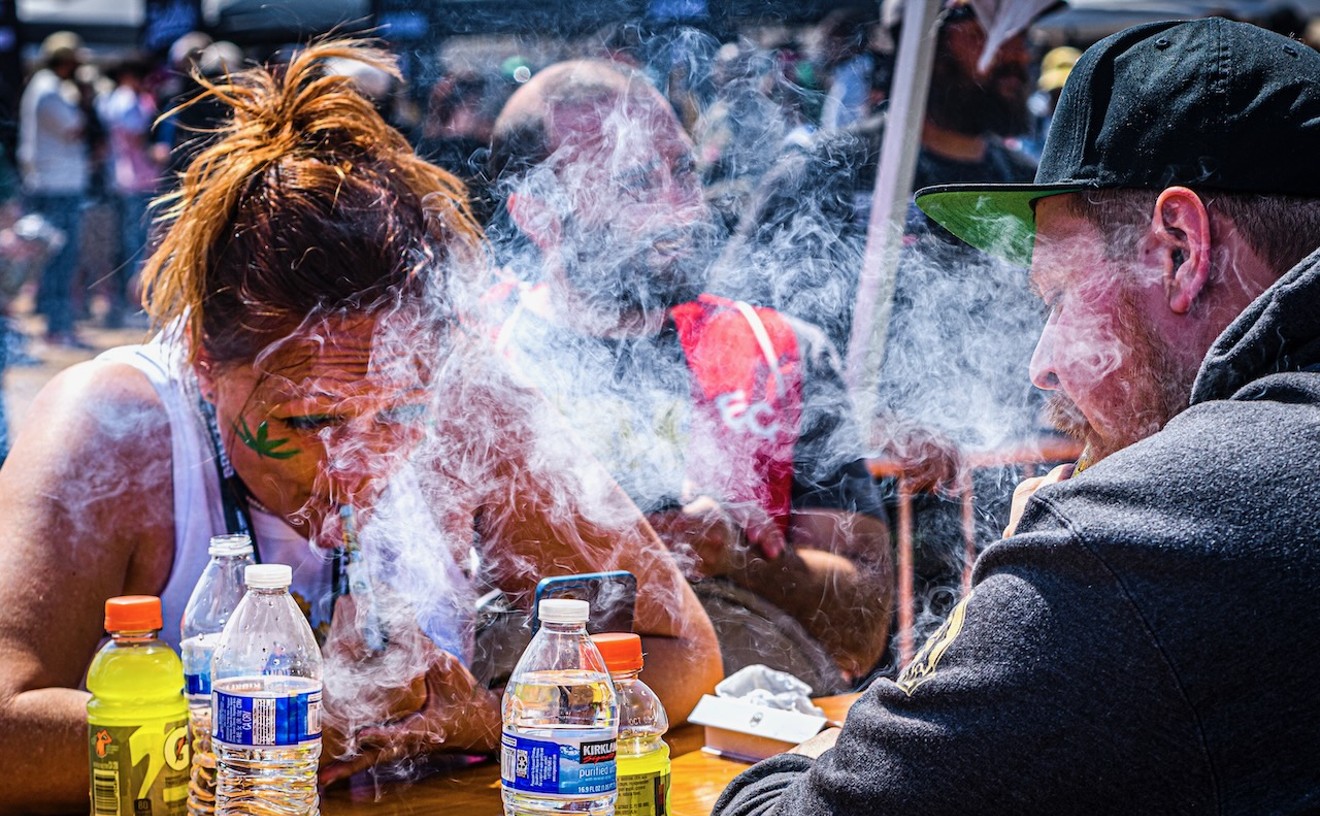Arizonans love medical marijuana.
Over 82.8 tons of marijuana were sold to Arizona’s 232,428 qualifying MMJ patients in 2019, new state data shows. That's an increase of over 25 percent from 2018 and far surpasses projected demand by the State Legislature.
The end-of-the-year report by the Arizona Department of Health Services, released on Monday, shows signs of a growing market on nearly every end.
Total tonnage is just one of many interesting facts to be found in this statistical report.
Sales in 2018 also broke records and were up 42 percent over 2017. That means growth, while impressive,
is slowing. But the slower rate of sales didn’t stop the state’s industry from ranking eighth in sales in the country with $705 million in profit, according to some analysts.
Actual financial data is no longer included in the AZDHS monthly or annual reports.
Nearly every category across the board experienced double-digit growth, except for a minor (pun intended) drop of three percentage points among patients under the age of 18 and a 22.7 percent drop in caregivers, of which there are now only 1,563. These caregivers typically service rural areas that can’t easily reach a medical dispensary.
Yet the number of licensed medical marijuana dispensary agents in the state more than makes up
for the drop of caregivers, going up by 30.27 percent to a total of 10,655 people.
The biggest growth from last year was an 80.84 percent jump in the “Other” category, which includes vapes,
concentrates, pills, topicals, sublingual sprays, inhalers, and every other form of processed cannabis. This accounted for 4.6 tons of product, or just over 6 percent of the total medical marijuana sold.
Edibles accounted for another 2.99 tons, an increase of 19.93 percent from 2018. That means nearly 10 percent of the total marijuana sold in the state by weight is in non-flower form, which typically are products presumed to have a higher profit margin.
Sam Richard, executive director at the Arizona Dispensaries Association, isn’t surprised at the growth in concentrates. He attributes it to the ADA’s involvement in the Rodney Jones extracts court case, which debated the legality of cannabis concentrates. Whether cannabis resin extracts were legal under the 2010 Medical Marijuana Act had been a question since voters passed it in 2010. But in June 2018, the state Court of Appeals ruled that the act didn't cover concentrates. The ruling caused apprehension and anxiety about concentrates for nearly a year, until the state Supreme Court okayed their use by patients in a May 2019 ruling.
“Because of uncertainty in that case, the number in ’18 for 'Other' was flat,” he said. “There are cost considerations. A gram of concentrate has a longer usable life than a gram of flower.”
Each patient can purchase up to 2.5 ounces every two weeks, but dividing the total sales by total patients
equates to only 0.86 ounces per month purchased each month on average in 2019. This is an increase from
the 0.82 ounce per month average in 2018, but still well below the allowable legal limit. (The average can be considered somewhat of a soft number because of concentrates, which pack in more THC for their weight.)
One thing that doesn't seem to have affected sales of medical marijuana concentrates is the vaping-illness epidemic.
The illnesses made headlines last summer, sickening more than 2,500, (including 17 in Arizona), and killing about 60 nationwide. People are still dying from it, including a new death reported this week in Louisiana. While many of the illnesses have been blamed on black-market vape pens containing vitamin E acetate, a Centers for Disease Control and Prevention report published this month states that of the vaping-illness patients who reported where they obtained their vapes, 16 percent said they bought from "only commercial sources," meaning legal dispensaries. Yet if the scare caused any drop in Arizona sales of vapes, which are lumped into DHS' concentrates category, the big increase in concentrate sales last year seems to have masked any sign of it.
“I think also we’re seeing a maturation of the Arizona market that other states have seen for a while,”
Richard said about the market’s growth. New products like the recently launched Muv Enhance Intimacy Oil, for example, are included in this more sophisticated market.
Richard said he believes shifting consumer patterns and more widespread education will carry the industry
through this year to even further growth in the medical market.
Getting into the weeds: Over 63 percent of the state’s medical marijuana patients are under the age of 40 (232,428). The elderly (71 and older) only account for 5.8 percent of total qualified patients in 2019, but that category grew by over 18 percent compared to 2017, with 13,595.
There’s still very little change in most ratios in the statistics. Patients ages 18 to 30 remained steady in the range of 26 percent since 2017. Males make up 59.75 percent of patients, while 40.25 percent identify as female. And, as usual, chronic pain is by far the reason medical marijuana is most often prescribed, representing 208,218 people, or 89.58 percent of total patients. Cancer, PTSD, and seizures are also notable percentages, while 10,803 patients are treating multiple conditions.
The industry's growth next year could be off the charts: Several groups launched recreational cannabis legalization initiatives in late 2019, and one sponsored by dispensaries, the Smart and Safe Act, already has collected more than half the voter signatures it needs to make November's ballot.
Read the entire DHS December report, with year-end information, by clicking here.
[
{
"name": "Air - MediumRectangle - Inline Content - Mobile Display Size",
"component": "18478561",
"insertPoint": "2",
"requiredCountToDisplay": "2"
},{
"name": "Editor Picks",
"component": "16759093",
"insertPoint": "4",
"requiredCountToDisplay": "1"
},{
"name": "Inline Links",
"component": "17980324",
"insertPoint": "8th",
"startingPoint": 8,
"requiredCountToDisplay": "7",
"maxInsertions": 25
},{
"name": "Air - MediumRectangle - Combo - Inline Content",
"component": "16759092",
"insertPoint": "8th",
"startingPoint": 8,
"requiredCountToDisplay": "7",
"maxInsertions": 25
},{
"name": "Inline Links",
"component": "17980324",
"insertPoint": "8th",
"startingPoint": 12,
"requiredCountToDisplay": "11",
"maxInsertions": 24
},{
"name": "Air - Leaderboard Tower - Combo - Inline Content",
"component": "16759094",
"insertPoint": "8th",
"startingPoint": 12,
"requiredCountToDisplay": "11",
"maxInsertions": 24
}
]











